1 - Expected post-Chinafy results
Does Liferay CMS work in China?
TLDR: Liferay websites take an average of 38 seconds to load from China, with only 59.6% of resources successfully delivered.
Read on to find out how Liferay websites perform in China and how you can make sure yours is optimized to work the way want to.
In this article, we’ll go into -
What is Liferay and who uses this CMS platform?
How do Liferay websites load from China across Beijing, Shanghai, and Guangzhou?
Why doesn't Liferay work in China?
How to optimize a Liferay website for China delivery
What is Liferay?
Founded in California in 2004, Liferay is an open-source web portal and content management system.
The agile CMS platform is used to build and manage highly customizable sites using a drag-and-drop interface that can, uniquely, be used offline.
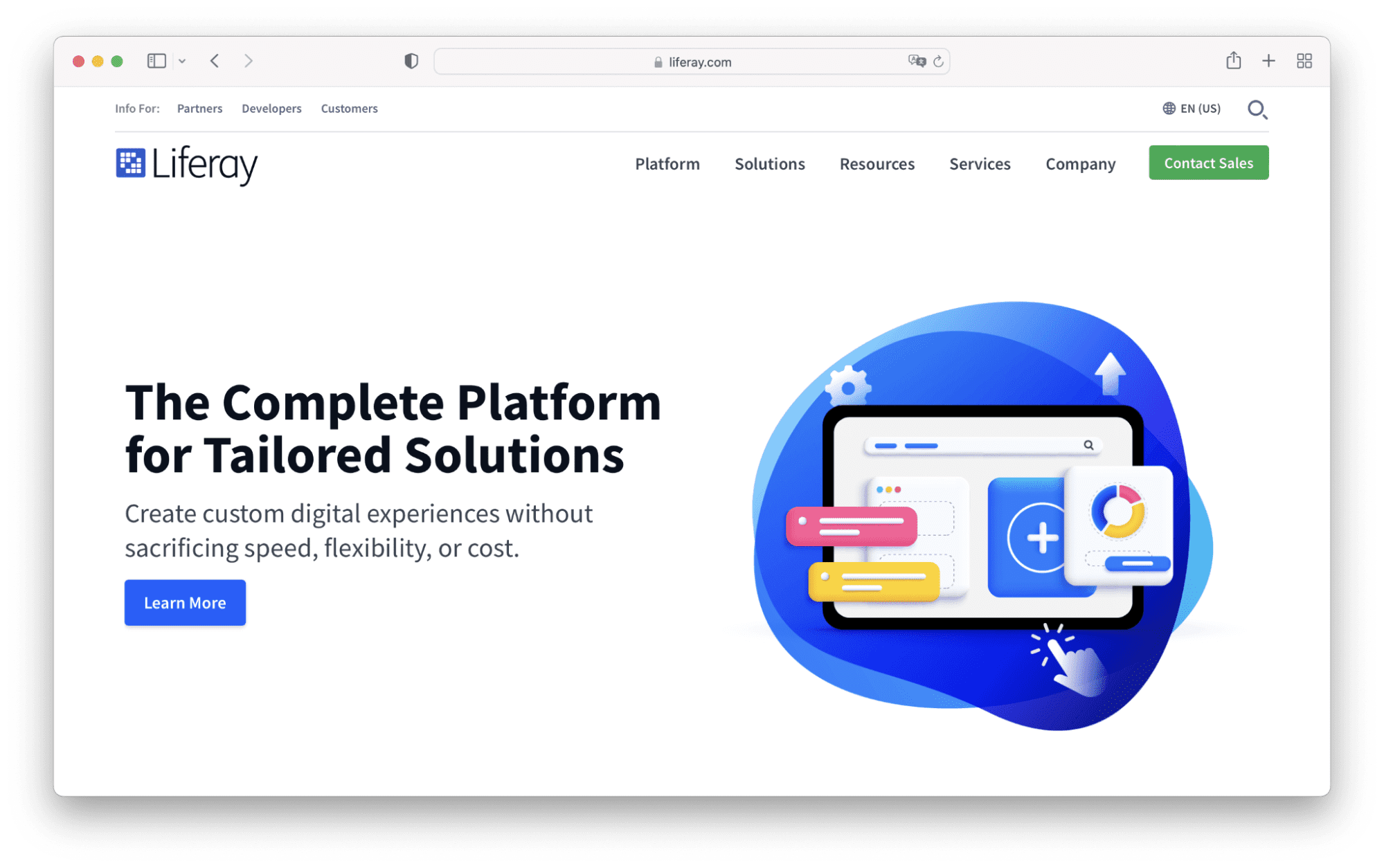
Who uses Liferay?
Liferay is used by organizations of all sizes from small businesses to Fortune 500s. Notable Liferay clients include Nike, Starbucks, NASA, the Council of Europe, the Australian Department of Education, and more.
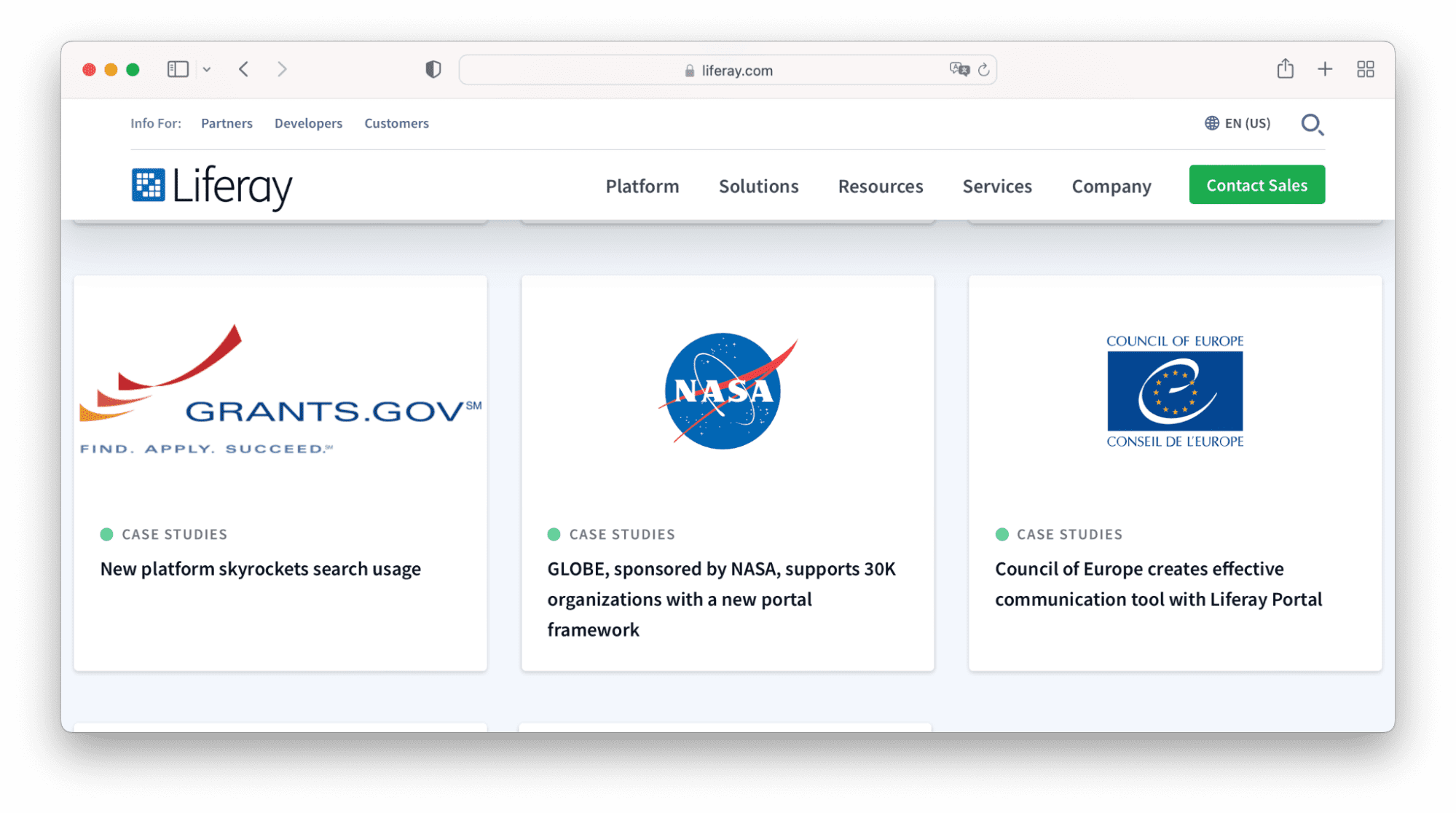
How do Liferay websites load in China?
By default, not too well.
Liferay websites are slow and broken by default when loaded from China. The average Liferay website takes 38.0 seconds to load in China off the shelf.
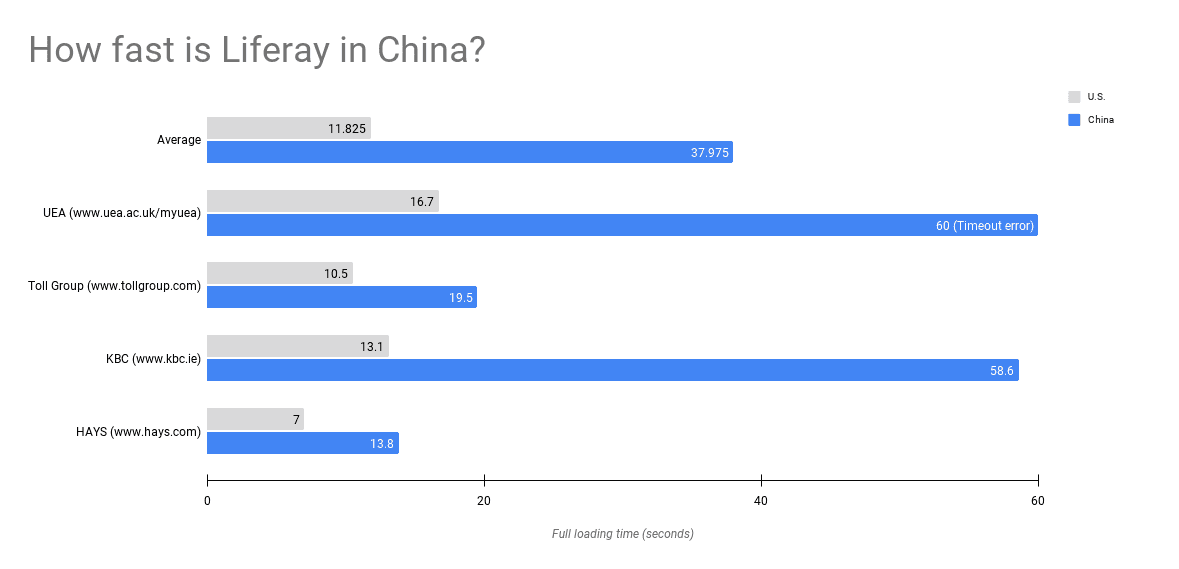
Not to mention, only 59.6% of the average Liferay website's resources successfully delivers to China visitors.

Why doesn't Liferay work in China (like it does elsewhere)?
Web incompatibility impacts all global websites in China. Websites built with Liferay are no exception.
These issues can be divided into two categories of -
i) infrastructure and
ii) code-based incompatibility
i) Infrastructural incompatibility
Hosting location and choice of CDN are common infrastructural variables that affect performance in China.
Liferay users by default get the benefits of using Akamai’s global content delivery network (CDN).
While Akamai is undoubtedly one of the leading Enterprise CDN providers, their global network does not perform as well for China visitors as they do globally. Akamai China
Note that Liferay uses Akamai’s global CDN and not their onshore China CDN, operated by ChinaNetCenter. Akamai China, like other non-China Tier 1 providers, do not operate their own CDN or points-of-presence (i.e. POPs) in China. Instead they partner with a local partner and leverage their onshore PoPs. Akamai China CDN is an add-on module to Akamai’s base-delivery products such as Ion that requires specific business licenses to use.
More on Chinafy & Akamai China CDN.
Akamai Waiting Time on average takes between 1,000ms to 150 ms when accessed from inside China.
Akamai has a mean waiting time of 374 ms, versus other platforms that load as fast as 49 ms. However, just as these other platforms may perform better for visitors in China, they may not be as performative as other CDNs elsewhere.

How CDN loads in China in terms of Waiting Time (Source: Chinafy)
More about how Akamai and Global CDNs such as AWS, Azure and Cloudflare compare in China
Companies tend to host their websites closer to where they are and not necessarily where their end users are, which introduces a low throughput and high latency. Liferay users are not immune to this.
Infrastructure aside, however, the more important component has to do with what Liferay websites are made of - its website resources.
ii) Code-based incompatibility
Websites in China uniquely encounter an issue loading third-party resources and assets that are inaccessible or slow in China.
To name but a few, these include, Google fonts, YouTube, Vimeo videos, and Amazon S3 files are among thousands of others that face incompatibility issues in China.
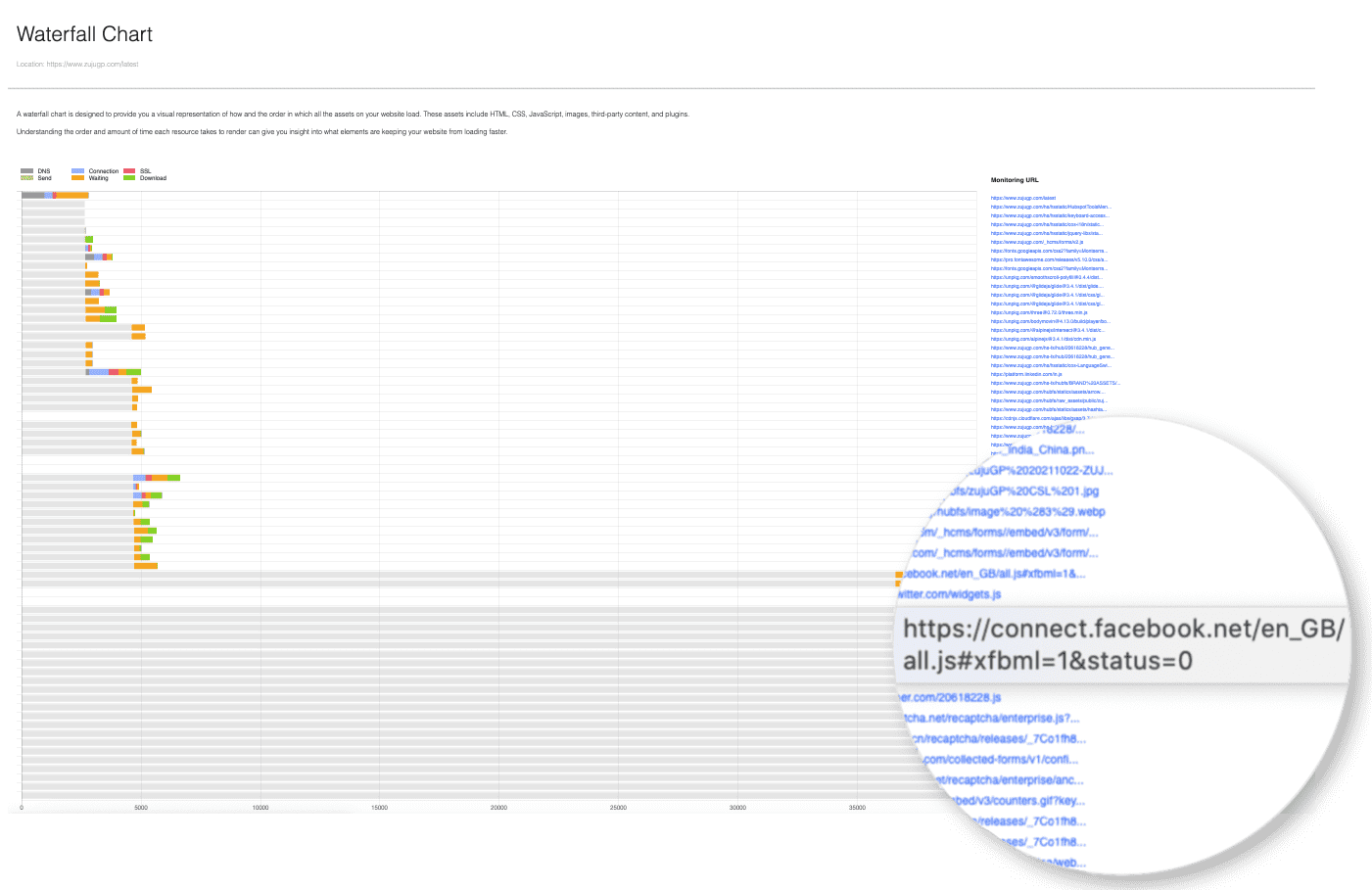
For example, Facebook resources take over 30 seconds to load from China. Note that Facebook is inaccessible from China, and thus, these resources often timeout.
Theoretically, you could address these technical issues. However, doing so would require becoming an expert on the ever-evolving landscape of web libraries and tools for China. Not to mention, hire additional headcount necessary to manually manage the site.
Of course, this brings us to the actionable portion of this article.
So, how can you optimize your Liferay website for China?
There are three possible routes to making a Lifeway website work in China.
Fully Onshore by hosting Liferay websites onshore in China
Partial Solution by an onshore China CDN, like Cloudflare China
OR Chinafy, where you bolt-on to make your current website faster, and more complete for visitors in China
We’ll go into more detail below about their efficacy, process, and logistics below.
i) Host your Liferay site in China
Well, you might ask “Well, why can’t I just translate and re-host my website?”
That’s a great question. A lot of people who have yet to work in China often make the false, and costly, assumption that localizing their website in China would simply involve the same steps they would take for other markets.
China’s legislative and technological environment makes hosting or operating a website from China a uniquely labor-intensive and lengthier process than most.
Not to mention, folks who have experienced this first hand would be quick to tell you that taking the necessary steps doesn't guarantee that the site will function as intended.
Timeline: The fully onshore route takes an average of 3 to 4 months for website development, and another 6 to 8 months more to acquire the qualifications needed to host in China. In most cases, this includes an ICP license and a China business entity.
Expertise: Popularly used platforms and libraries, such as Google APIs or Hubspot, YouTube/Hubspot) are notoriously slow in China, if not entirely inaccessible.
To resolve and manage these code-based incompatibilities, you would require dedicated expert headcount This holds true whether or not your website is hosted in China or outside of China.
Costs: A fully onshore website will typically cost you between $42K and $100K off the bat. Maintaining the website also usually involves hiring an agency or adding an in-house staff member.
ii) Use a Near-China or China CDN
It is true that China CDNs are capable of addressing some performance issues on the infrastructural level, but they cannot address all performance issues in China.
CDNs by nature do not resolve or optimise inaccessible or slow 3rd party resources.
Examples include a long, inexhaustible, list of third-party resources such as Google ReCaptcha, Vimeo embeds, Marketo pop-up, and Hubspot forms, to name but a few.
Overall, a China CDN can to some extent deliver a faster website, but it cannot deliver the intended full experience. Not to mention, in order to use an onshore CDN, it would still be necessary to acquire an ICP license and establish an onshore business entity.
With all the grunt work, you may still face suboptimal results, frustrated marketing teams and Chinese users asking for more.
iii) Add Chinafy to your existing website stack
The third option to optimise your offshore or onshore website would be to use Chinafy.
Developers bolt on Chinafy to their website to identify and resolve the code-based components causing performance issues, so that they don’t need to build, manage, or re-host a website from scratch.
With Chinafy, you can enable any Liferay websites to achieve virtually onshore performance with an offshore set-up. Alternatively, if you have requisite licenses - you can continue to leverage Chinafy for its web compatibility capabilities with an onshore in-China stack provided by its verified partners, including China’s leading cloud provider, Alibaba Cloud.
Without editing a line of code, Chinafy’s combined approach resolves thousands of code-based incompatibilities keeping a website from loading properly in China then includes a fully-managed CDN to speed up your website further.
The outcome? A much faster, optimized, fully-managed version of the global site in China, ready to deploy in 2 weeks.
Learn more specifics about how exactly Chinafy enables (almost) any existing website to load fast and fully in China.
Do you use Liferay?
Test your website in real-time from China! Then fill out our Get Started Form or email enterprise@chinafy.com to learn more.
We’ll even help you run a free initial analysis of your current website in China, completely on us.


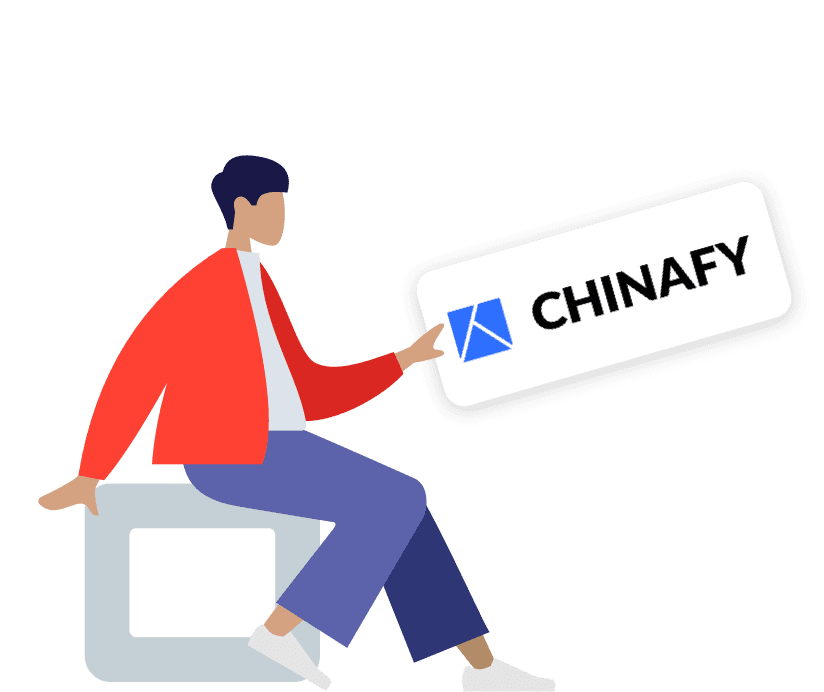
1 - Expected post-Chinafy results






























